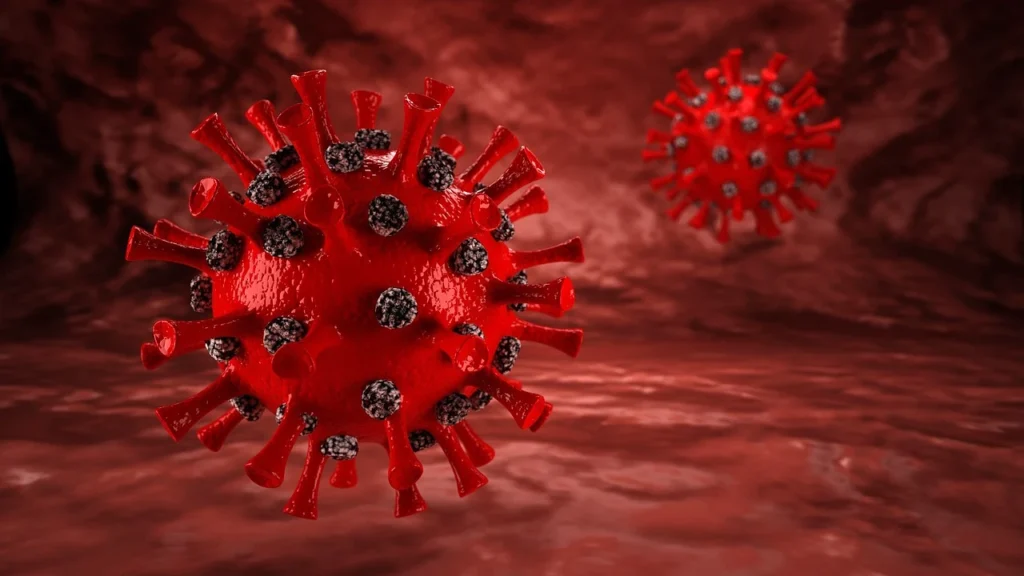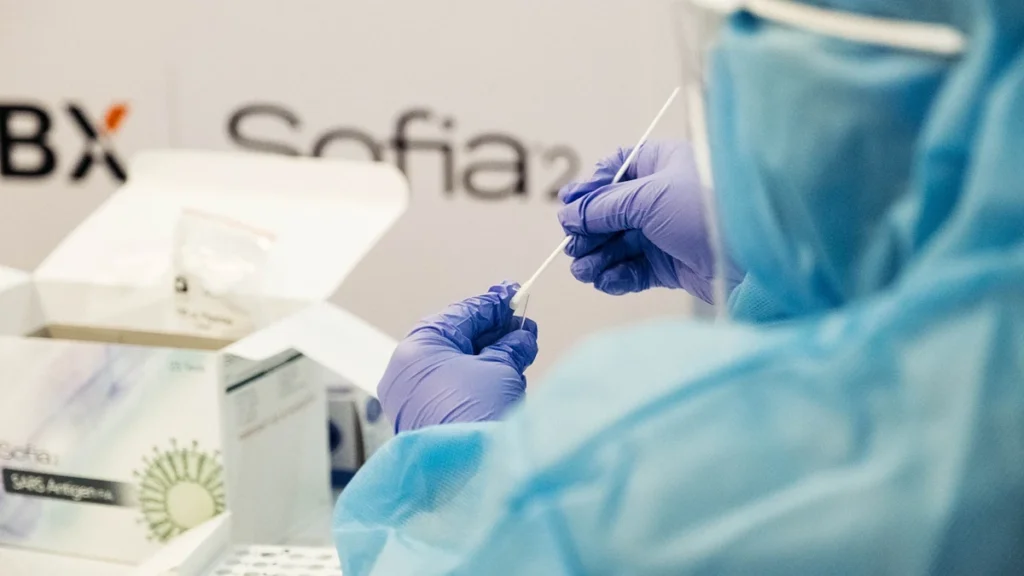During monkeypox outbreak Monkeypox Specimen collection is very important to avoid further spread of disease through laboratory personnel in the community by using standard protocols for monkeypox specimen collection and monkeypox specimen transportation. This article provides complete guide for monkeypox specimen collection from suspected monkeypox patient skin lesions according to standard laboratory procedures

What Type of Training is Needed for Monkeypox Specimen Collection Staff?
- Monkeypox Specimen collection staff intending to collect monkeypox sample must be trained and ensure to follow standard operating procedures (SOPs).
- Monkeypox Specimen collection staff must be trained for Appropriate use of personal protective equipment (PPE) including disposable anti fluid gown, face mask, head cover, shoe covers, latex gloves, goggles or full-face cover.
- Monkeypox Specimen collection staff must be trained for disposal of used PPE.
- Moreover monkeypox Specimen collection staff should be trained for specimen collection, storage, packaging, and transport of monkeypox sample.
What Measure Should be Taken for Biological Risk Management of Laboratory Dealing with Monkeypox Virus?
On the basis of risk assessment of the laboratory dealing with routine clinical specimens from confirmed or suspected monkeypox case, strict or heightened measures should be taken to reduce the risk of virus transmission from the laboratory transmission. These measures may include
- Trained and competent staff must perform monkeypox specimen testing in the laboratory,
- All staff dealing with monkeypox specimen must be trained for wearing appropriate PPE,
- All staff must comply with standard precautions and standard operating procedures (SOPs) designed to deal with monkeypox specimen.
- Laboratory staff must ensure using effective disinfectants including quaternary ammonium compounds and 0.5% (or 200ppm) bleach (0.5%), and avoid any aerosol generating procedure while dealing with monkeypox specimen.
- All laboratory staff dealing with monkeypox specimen during sample collection and handling must strictly follow infection prevention and control guidelines
- All laboratories dealing with monkeypox specimen originating from suspected, probable or confirmed case of monkeypox must conduct their risk assessment. In case of specimen manipulating procedures heightened control measures for example core biosafety requirements (biosafety level 2) are compulsory. However, as monkeypox virus can be contracted during specimen processing stage due to specimen itself or noncompliance of SOP’s. Therefore, along with core biosafety requirements heightened biosafety measures are also recommended.
What Measures Should be Adopted for Clinical Testing Without Monkeypox Virus Propagation?
These measures adopted for clinical testing without virus propagation are as under
- Specimens from monkeypox suspected patient, prior to sample inactivation, must be handled in a Class II biosafety cabinet (functioning and certified). However, properly inactivated specimens do not require a BSC.
- Laboratory personnel handling with specimens from monkeypox suspected patient must wear appropriate PPE’s especially before inactivation of specimen.
- In case of aerosol generating procedures e.g. centrifugation safety cups or sealed rotors should be used.
For specific procedures including aerosol generating procedures, additional control measures should be considered according to the local risk assessment. For further guidance core biosafety requirements and heightened control measures 4th edition of the WHO Biosafety Manual should be consulted.
What is the Recommended Monkeypox Specimen from Monkeypox Suspected Patient?
Monkeypox recommended specimen for laboratory confirmation is preferably skin lesion material which may be
- Swabs of lesion surface and/or exudate,
- Roofs from more than one lesion, or
- Lesion crusts

What is the recommended swabbing method?
Take Dacron or polyester flocked swabs and swab the lesion vigorously to ensure that the adequate viral DNA is collected.
Which type of swab should be used?
Both dry swabs and wet swabs placed in viral transport media (VTM) can be used.
Which type of sample can be collected in single sample collection tube?
During sample collection lesions swabs, crusts and vesicular fluids should not be mixed in the same sample collection tube.
However, sample can be collected from two lesions of the same type in one single sample collection tube but it should be from different locations on the body.
Is oropharyngeal swab recommended in case of monkeypox virus?
Collection of an oropharyngeal swab is encouraged in addition to skin lesion swabs. However, it is not preferable due lack of data on the accuracy of oropharyngeal swab specimen for clinical diagnosis for monkeypox virus. So one should be cautious while interpreting and reporting a negative throat swab specimen.
What are the storage conditions for monkeypox specimen?
In case of monkeypox virus long term specimen storage i.e. More than 60 days from collection is recommended at -70°C. However, repeated freeze-thaw cycles should be avoided to avoid specimen deterioration because it can reduce the quality of specimens.
What are the storage conditions during monkeypox specimen transportation?
Specimens should be transported to laboratory immediately after collection and it must be stored, refrigerated or frozen within an hour of collection.
All specimens which need to be transported should have;
- Appropriate triple packaging
- Proper labelling
- Patient history
- Coolers and cold packs/dry ice

What are the Monkey Specimen Collection and Storage Conditions?
| Specimen Type | Collection Materials | Storage Temperature | Collection purpose |
| Skin lesion material, including: • Swabs of lesion exudate • Lesion roofs • Lesion crusts | Dacron or polyester flocked swabs with VTM or dry swab | Refrigerate (2-8 °C) or freeze (- 20°C or lower) within 1 hour of collection; -20°C or lower after 7 days | Recommended for diagnosis |
| Oropharyngeal swab | Dacron or polyester flocked swabs with VTM or dry swab | Refrigerate (2-8 °C) or freeze (- 20°C or lower) within 1 hour of collection; -20°C or lower after 7 days | Recommended for diagnosis if feasible, in addition to skin lesion material |
| Serum | Serum-separating tubes | Refrigerate (2–8 °C) or freeze (-20 °C or lower) within 1 hour of collection; -20°C or lower after 7 days | To be considered for serology for diagnosis/differential diagnosis |